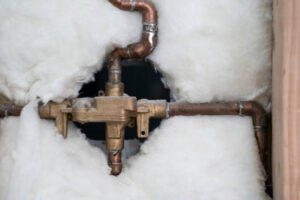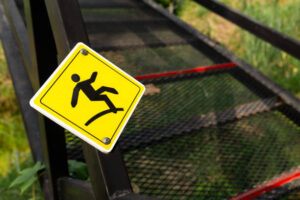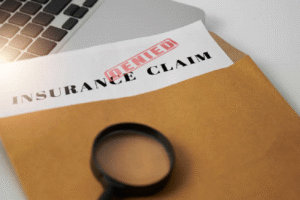Winter is a season many of us look forward to—filled with cozy nights by the fire, festive gatherings, and peaceful snowy mornings. But along with all the holiday cheer, winter also brings some real challenges for homeowners. Freezing temperatures can cause pipes to burst, heavy snow and ice can damage your roof, icy walkways increase the risk of slips and falls, and heaters or fireplaces can create fire hazards. All these problems can lead to costly homeowners insurance claims that no one wants to deal with.
The good news is that most winter-related home damage is preventable. With a little preparation and some smart steps, you can protect your home, keep your family safe, and avoid the stress and expense of filing insurance claims.
Let’s walk through the four key ways to safeguard your home during the cold months.
❄️ 1. Prevent Frozen and Burst Pipes
Frozen pipes are the leading cause of winter homeowners insurance claims. When water freezes inside a pipe, it expands—and that expansion can cause the pipe to crack or burst. The damage from just one burst pipe can be massive, leading to flooded walls, ruined floors, and expensive repairs.
Why are pipes vulnerable?
Pipes that run through unheated or poorly insulated areas—like garages, attics, crawl spaces, or exterior walls—are the most at risk. When the temperature dips below freezing, the water inside these pipes can turn to ice, creating pressure that eventually breaks the pipe.
What you can do to prevent frozen pipes:
-
Keep your home heated: Make sure your thermostat stays set to at least 55°F, even when you’re away. This consistent warmth helps prevent pipes from freezing.
-
Insulate exposed pipes: Use foam sleeves or heat tape on pipes in unheated areas, such as basements, attics, garages, and crawl spaces. Insulation helps keep pipes warm even during bitter cold.
-
Open cabinet doors: If your sinks are on exterior walls, open the cabinet doors underneath to let warm air circulate around the plumbing.
-
Let faucets drip: On the coldest nights, allow a slow trickle of water to flow through faucets connected to vulnerable pipes. Moving water is less likely to freeze.
-
Shut off and drain outdoor faucets: Disconnect garden hoses, turn off the water supply to exterior spigots, and drain any remaining water to avoid freezing and bursting.
If you suspect a frozen pipe:
Turn off your water supply immediately to prevent flooding in case the pipe bursts. You can carefully warm the pipe with a hairdryer or heat lamp—never use an open flame. And if a pipe does burst, call a professional plumber right away.

🧹 2. Clear Ice Dams and Maintain Your Roof
Snow-covered roofs are beautiful—but they can cause serious damage if ice dams form. Ice dams occur when heat escapes into the attic and melts snow unevenly on the roof. That melted snow runs down to the roof’s edge where it refreezes, creating a ridge of ice. This ice barrier stops water from draining properly, causing it to back up under shingles and leak into your home.
Why is this a problem?
Water leaking through the roof can damage ceilings, walls, insulation, and belongings. It may also lead to mold growth, which is costly and hazardous.
How to protect your roof:
-
Clean gutters before winter: Clear leaves, twigs, and debris from gutters and downspouts so melting snow can drain away freely.
-
Improve attic insulation: Proper insulation keeps warm air inside your living space rather than leaking into the attic, which reduces the chances of uneven snow melt.
-
Ensure good attic ventilation: Adequate airflow keeps your attic cold, preventing the temperature fluctuations that cause ice dams.
-
Use a roof rake: After heavy snowfalls, safely remove snow from the edges of your roof with a long-handled roof rake. This helps reduce snow buildup and ice dam formation.
-
Inspect your roof: Check for damaged or missing shingles before winter hits. Repairing them can prevent leaks during snowmelt.
Important: Avoid climbing on your roof if it’s covered with snow or ice. This can be very dangerous. If snow removal or roof inspection is needed, consider hiring a professional.
⚠️ 3. Minimize Slip-and-Fall Hazards on Your Property
Slips and falls on icy walkways and driveways aren’t just painful—they can also lead to liability claims if guests or visitors get hurt on your property. Homeowners could be responsible for medical bills or lawsuits, which may increase insurance premiums or cause claims headaches.
How to keep walkways safe:
-
Shovel promptly: Clear snow from sidewalks, steps, and driveways as soon as possible after a snowfall. Don’t forget side doors, pathways to the garage, or mailboxes.
-
Apply de-icing agents: Use rock salt, ice melt, or sand to reduce icy patches and improve traction.
-
Install adequate lighting: Motion-sensor or timed lights illuminate walkways, helping visitors see icy spots at night.
-
Add handrails: If your stairs or entryways don’t already have handrails, installing sturdy ones can help prevent falls—especially for older family members or guests.
-
Use mats inside entryways: Place heavy-duty mats to catch snow and moisture, reducing slip risks inside your home.
Pro tip: Regularly check for black ice, which can be hard to spot but extremely slippery.

🔥 4. Reduce Fire Risk from Heaters and Fireplaces
Winter is also the season for portable heaters, wood stoves, and fireplaces—all of which can increase the risk of house fires if not used properly. Fire-related claims spike during the colder months, and prevention is critical to keep your home and loved ones safe.
Simple steps to reduce fire risks:
-
Keep heaters at a safe distance: Space heaters should be placed at least three feet away from curtains, furniture, bedding, and anything else flammable.
-
Never leave heaters unattended: Always turn off space heaters when you leave a room or go to sleep. The same goes for fireplaces and wood stoves.
-
Clean your chimney: Have a professional inspect and clean your chimney at least once a year to remove creosote buildup and reduce the risk of chimney fires.
-
Use fireplace screens: Install a screen or glass door to prevent sparks or embers from escaping into the room.
-
Install and maintain smoke detectors: Make sure smoke alarms are installed on every floor, especially near sleeping areas. Test them monthly and replace batteries regularly.
-
Have a fire extinguisher handy: Keep a multipurpose extinguisher in common areas and know how to use it.
📝 Final Thoughts: A Little Preparation Goes a Long Way
Winter weather can test your home’s resilience, but with some planning, you can avoid most common pitfalls. Protecting your home from frozen pipes, roof damage, slips and falls, and fire hazards doesn’t just keep your family safe—it also helps you avoid the hassle and expense of filing insurance claims. And that means no surprise premium increases or out-of-pocket repair costs.
Start your winter prep early—clean gutters, insulate pipes, clear walkways, and inspect heating systems. These small steps create a warm, safe, and worry-free home all season long.
If you want peace of mind this winter, make your home winter-ready today!





